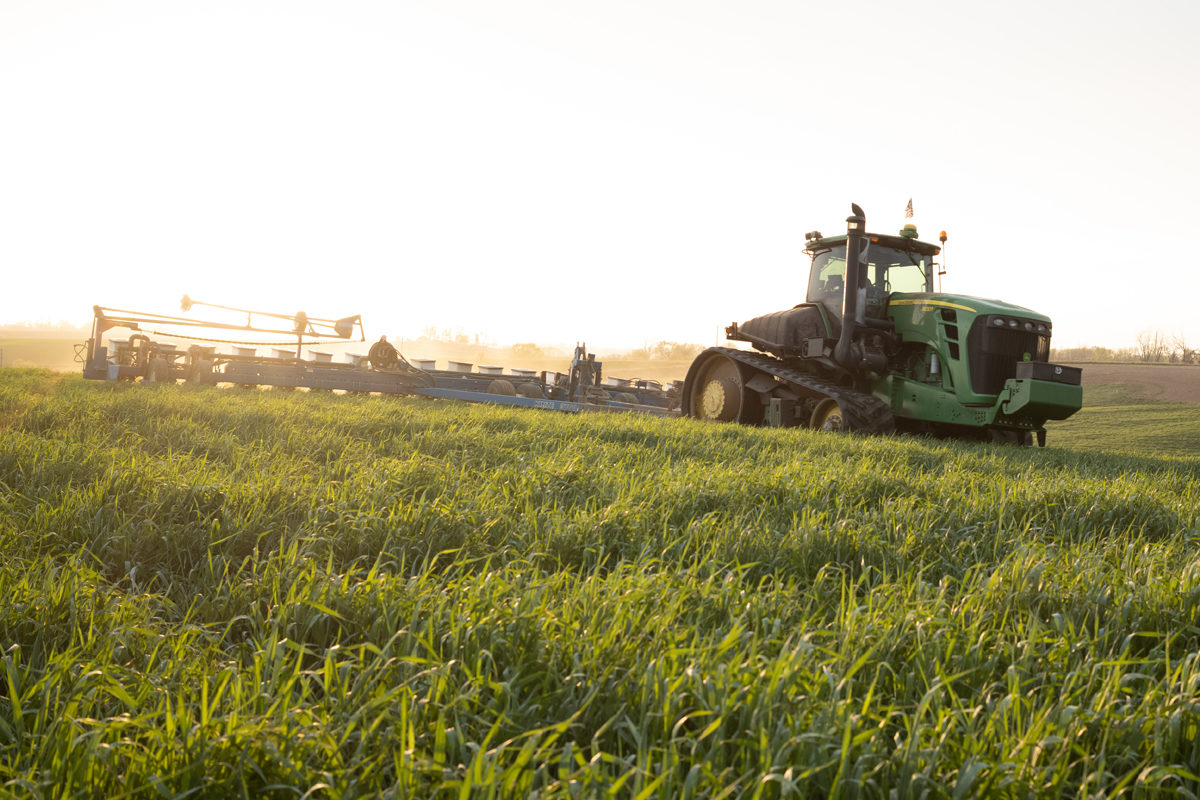Cover Crops Help Farmer-Leaders Increase Soil Health, Sustainability of Animal Feed and Pig Production

In farming, it all starts with the soil. Soil health impacts everything from water infiltration and root development to plant health and sustainability. As more consumers base purchasing decisions on a product’s sustainability, buyers across supply chains are increasingly sourcing sustainable ingredients that meet consumer preferences.
Many farms across the U.S. are multigenerational operations, grounded in decades of natural resources conservation. As front-line environmental stewards, each successive generation wants to leave the land better than they found it.
That prevailing environmental ethic across the U.S. farming community is a great match for a forward-thinking, farmer-led initiative recently announced by the United Soybean Board, the National Pork Board and National Corn Growers Association called Farmers for Soil Health.
The initiative complements the sustainability goals of the three commodity organizations. Plus, the products are deeply interconnected; most farmers who grow soybeans also grow corn, and soybean meal and corn are staple feedstuffs for hogs.
Partnering in this initiative returns value to U.S. corn and soybean farmers and pork producers while collectively working to reach goals established by each of the organizations.
This farmer-funded program also has support from national organizations like the U.S. Department of Agriculture’s Natural Resources Conservation Service to advance soil health practices — especially through farmer adoption of cover crops — on corn and soybean acres across the U.S.
Farmer-leaders from corn, soy and pork are advocates for cover crops because of the value they bring to their own farms.
“I started using cover crops on my farm 10 years ago, and I have witnessed my soil health make steady improvements,” says Ralph Lott, who serves as Chair of the soy checkoff and farms in Seneca Falls, New York. “A healthy soil profile leads to more robust root development and, consequently, improves a plant’s ability to more efficiently take up water and all other nutrients.”
After struggling with not getting enough cover growth in the fall, Lott adjusted his management to broadcast wheat over 1,700 acres of soybeans during the R7 growth stage or halfway through leaf drop. This strategy has allowed for a successful cover crop even with a shorter growing season in the Northeast.
“There was a learning curve, but today we put six different cover crops after wheat, including tillage radish, two types of clovers, sunflower buckwheat and Sudan grass, all planted together in 30-inch rows with special plates in the corn planter,” says Lott.
On his farm in Edison, Ohio, John Linder, chairman of the Corn Board of the National Corn Growers Association, also uses and advocates for cover crops. “On our family’s operation, utilizing cover crops delivers a heightened efficiency in soil-to-plant conversion cycles — not only during the crop growing season but all year long. Farmers who adopt cover crops reap the benefit of improving their operation’s overall soil health and can garner the added rewards of weed suppression, improved water quality, increased carbon capture and habitat for pollinators and other beneficial wildlife.”
The Soil Health Institute estimates if cover crops increase gradually, eventually meeting Farmers for Soil Health initiative’s goal of 30 million acres by 2030, it would:
- Increase carbon sequestered in soils by about 7 million metric tons.
- Reduce erosion by 105 metric tons.
- Reduce nitrogen loss to groundwater by 272 million pounds.
Those benefits add up to an increasingly important selling point for pork: sustainability. Steve Rommereim, past president of the National Pork Board and pork producer from Alcester, South Dakota, endorses the initiative not only for its benefits to fellow pork producers, but also because of the agronomic benefits cover crops offer.
“I have personally used cover crops on my farm and have seen their value in improving the soil structure and reducing erosion. I’m also a hog farmer, and I appreciate the pork industry continuing down the path of continuous improvement,” says Rommereim. “This initiative has a dual goal of reducing the overall environmental footprint of corn, soy and pork while improving the soil health of corn and soybean farms across the U.S.”
To meet its goals, Farmers for Soil Health will provide financial and technical assistance, education programs in targeted states, and a nationwide measurement, reporting and verification platform for conservation practices, including the use of cover crops.
“As these three commodity groups look to meet their sustainability goals, we must consider the latest technology might also include nature’s technology — the biological life activities in the soil itself. By utilizing cover crops, we enable the benefits of that technology year-round,” concludes Linder.



